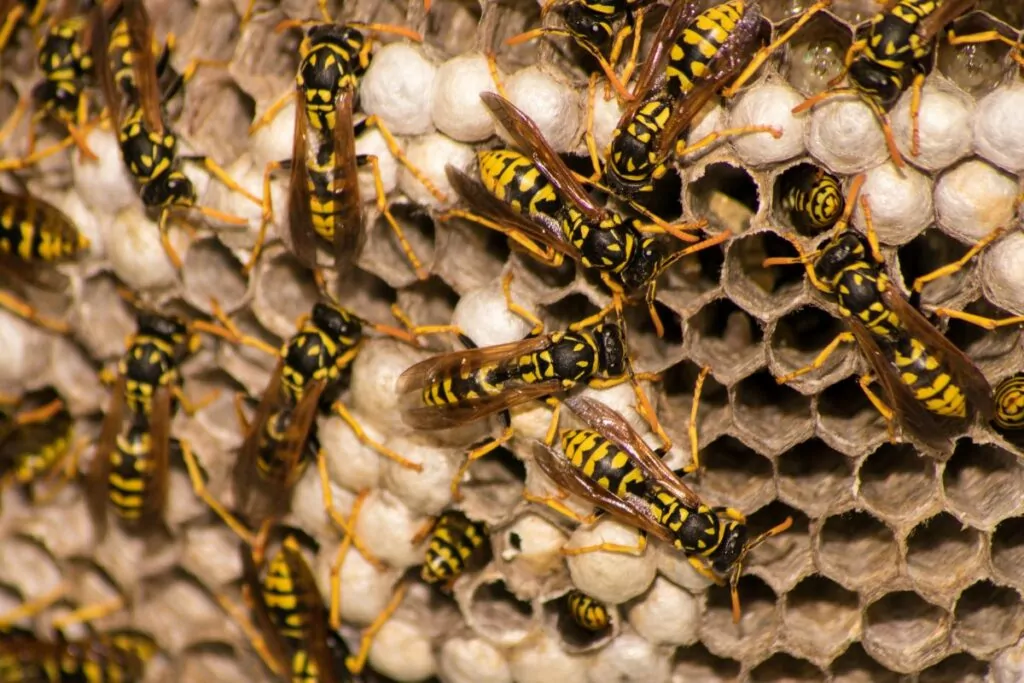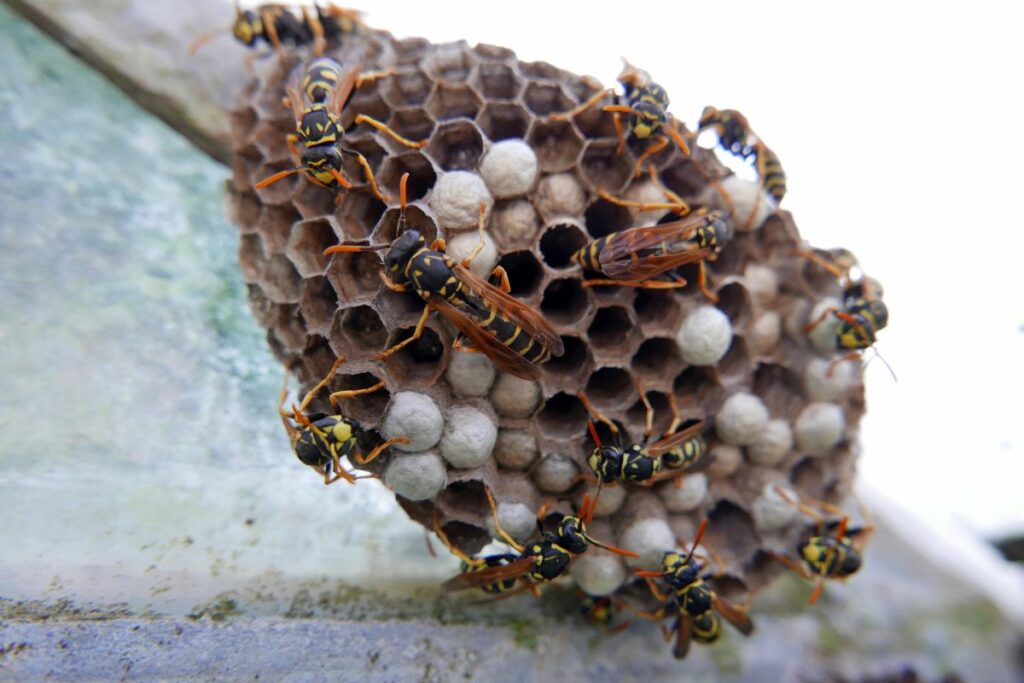Yellow jackets can be aggressive and dangerous, and their nests can be pretty intimidating, too. If you think you have an infestation near your property or yard, you’ll need to know exactly what you’re looking for in order to treat it.

In this article, we’re going to walk you through everything you need to know (see also: How To Start Beekeeping: Everything You Need to Know)about yellow jacket nests, including what they look like, where to find them, and how to treat them.
What Are Yellow Jackets?
Yellow jackets are a type of predatory social wasp that tend to nest in cave-like areas or in the ground. The term refers to between 35-40 species of wasp and they’re often mistaken for bees, boasting a similar size and color profile to honey bees.
Yellow jackets are found all over the world, but they’re particularly common in North America. Although they tend to nest in the ground or in concealed areas, they’re known as a generalist species, which means they’ll build nests almost anywhere, and can be found in rural and urban areas.
These wasps are notoriously territorial, and their sting can be life-threatening to humans. If their colony is disturbed, they can become aggressive and sting repeatedly, and they’ll usually bite and grip your skin before attacking with their stinger.
Their sting is one of the biggest differences between yellow jackets and bees – (see also: Yellow Jackets Vs. Honey Bees, What’s The Difference?)while bees only sting once, the yellow jacket can sting time and time again.
How To Spot A Yellow Jacket Nest
If you think you have a yellow jacket infestation near your property, you’ll want to locate the nest and deal with it appropriately. However, this is easier said than done.
Yellow jacket nests are often concealed very effectively, and their nest locations aren’t always obvious.
Here are a few tips and tricks to help you track down a yellow jacket nest:
- Yellow jackets are most active between 10 am-4 pm. Monitor the areas where you usually spot the yellow jackets, and see if you can track them back to the nest during this time. They’ll often use the same flight path, which can make them easy to track.
- Look for holes in the ground. Yellow jackets often build nests that are at least partially underground – if they’re flying in and out of a hole, or are found in groups near a hole, you’ve probably located the nest.
- If you’re struggling to spot any yellow jackets, lure them with food or fruit juice. Once they feast on the food, they’ll return to their nest, which can make them easier to track.
What Does A Yellow Jacket Nest Look Like?

Nests are usually located underground, and the entrance to the nest will look like a small hole, where the yellow jackets fly in and out of.
Once they enter the hole, they’ll fly a fair distance into the ground before arriving at their nest, which is usually a cylindrical design, with a nest entrance at the bottom, a covering, root support, queen cells, and worker cells.
Remember: none of these intricacies will be visible when you first spot the nest, as they’ll be disguised beneath the ground, or in the area the yellow jackets are nesting in.
If you locate a nest during the day, mark it without disturbing the wasps, and come back to treat it later. Most yellow jackets will return to the nest at sunset – treat your nest around this time to minimize your risk of getting stung and eliminate as many yellow jackets as possible.
How To Treat A Yellow Jacket Nest
Once you’re ready to return to the yellow jacket nest, you can start treating it. Although most nests are underground, you may come across a wall or aerial nest, all of which will require different treatment methods.
Here’s how you can treat each type of yellow jacket nest.
Ground Nest
If you’ve discovered a ground nest, you can treat it with an insecticide or a dedicated wasp spray. Please wear protective clothing before treatment to avoid getting stung.
Spray your chosen product generously (at least half a can) to completely saturate the nest, then leave the area immediately.
Aerosols can take anywhere from a few hours to a full day to work, however, you will usually see an increase in activity near the nest immediately after.
Check on the nest between 12-24 hours later, and repeat the treatment if necessary.
Aerial Nest
Sometimes, yellow jackets will create elevated aerial nests. You can use the same aerosol to treat an aerial nest. Stand at least 20 feet back from the nest, and spray half a can of the aerosol generously onto the nest until saturated.
Return in 12-24 hours to assess efficacy, and repeat the process if necessary.
Wall Void Nest
In some cases, yellow jackets may choose to nest inside a building, such as in a ceiling, attic, or wall void. In these locations, a typical nest is approximately the size of a basketball, but can often grow to be much larger.
Once you’ve located the entrance hole, you’re not out of the woods yet. Although some nests can be just a few inches from the entrance, some can be up to 30 feet away.
Start by using an aerosol treatment on the entrance of the nest, and leave the entrance hole open after treatment. This will also eliminate any workers returning to the nest, not just those inside.
If you know exactly where the nest is in the wall, you can drill a small hole into the area and inject the aerosol directly into the nest. If you do this method, ensure you seal the drill hole after.
The Bottom Line
Although the entrance to a yellow jacket nest is small, the nest itself is often concealed, and much larger. These unique cylindrical designs are usually buried underground or in wall voids, so determining just how large they are can be impossible.
Thankfully, there are plenty of effective treatments you can use to deal with an infestation. Remember to approach potential nesting sites with caution and seek professional assistance if you’re dealing with a large infestation.
- Do Bug Zappers Kill Bees? Completely Explained - April 9, 2024
- Does Brake Cleaner Kill Bees? Full Explanation - March 20, 2024
- Do Bald-Faced Hornets Kill Honey Bees? & How to Protect Them - March 4, 2024
